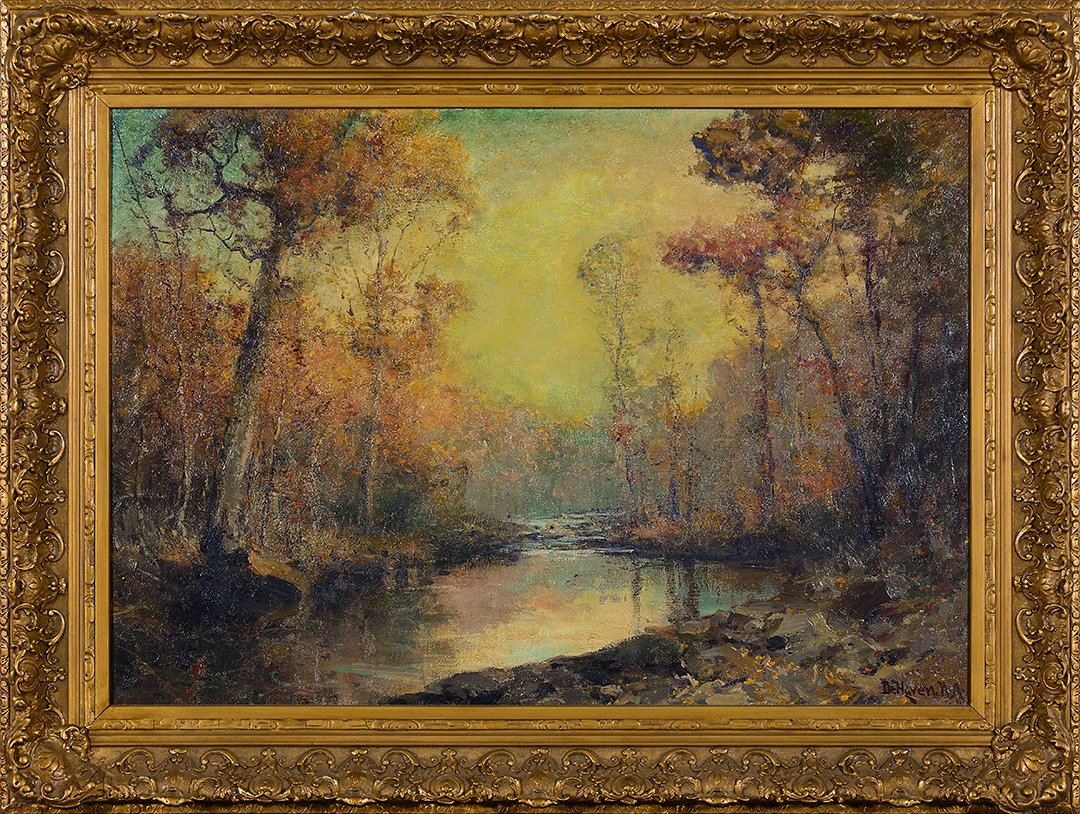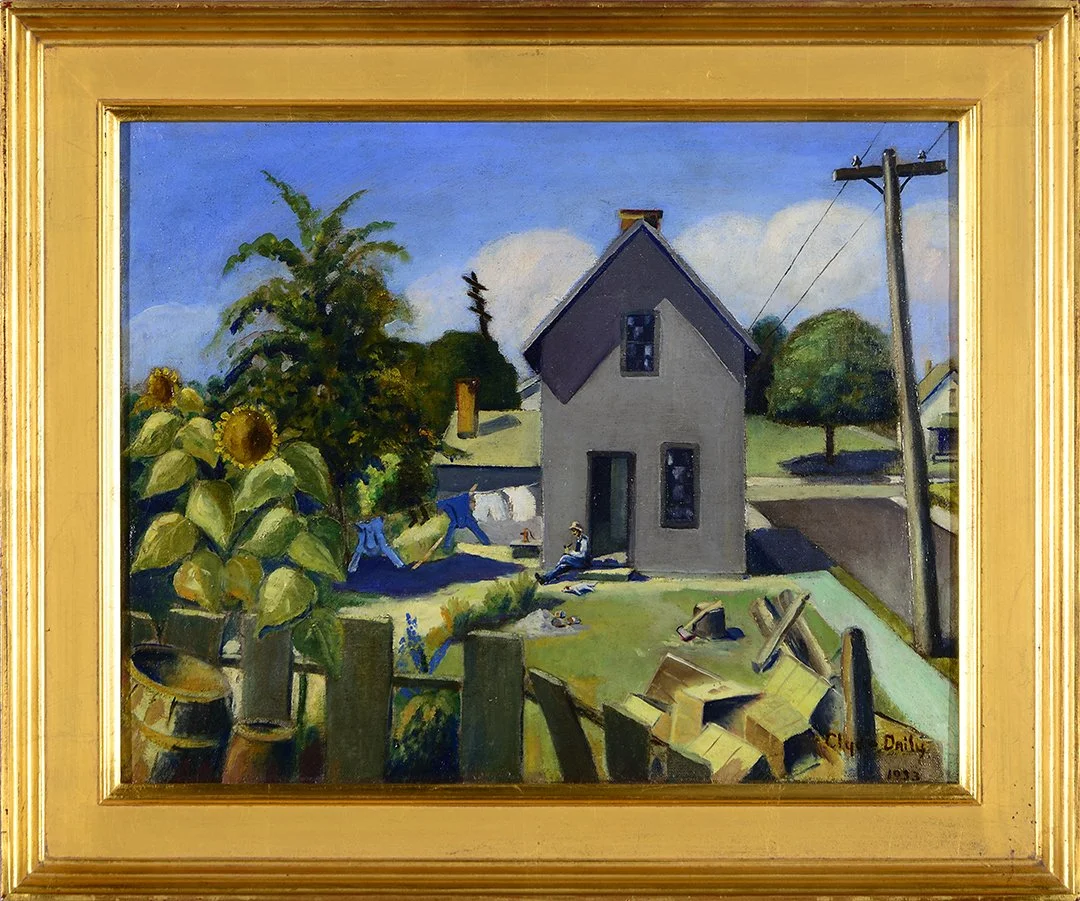Franklin De Haven
Franklin De Haven
Autumn
Oil on Canvas
28 1/4 x 40 1/4 inches
37 3/4 x 49 1/2 inches in the frame
Signed Lower Right
ID: DH4427
Based on his birth certificate, Franklin B. DeHaven was actually born Benjamin Franklin DeHaven in Bluffton, Indiana on December 26,1856. DeHaven later arrived in New York City in 1886. He became a student of George Henry Smillie who, having made a reputation as a poetic landscape painter of Rocky Mountain and Florida subjects, was concentrating upon rural New England and Atlantic shoreline scenes, especially around East Hampton, Long Island, which had by the mid-1880s achieved the status of "The American Barbizon." It is not surprising to find latter-day Hudson River School influences and an intense Barbizon or, perhaps more specifically, Tonalist sensibility in much of De Haven's work. Most of his works were done in the New England area.
His paintings are characterized by variety, excellent draftsmanship, and a thorough understanding of nature. Dramatic skies are almost always a major element. Said Edgar Mayhew Bacon in Essays on American Art and Artists, published in New York in 1896, "He filches…whole acres of sand-dunes and miles of breaking surf and brings them boldly to New York." Evening at Monomet (date and location unknown) is DeHaven's most famous and probably his best painting. Exhibited at the Prize Fund Exhibition held in the American Art Galleries of New York City in 1889, it is a beautiful evocation of a sunset on the Maine Coast. Dunes are bathed in a golden light, with dark shadows counter pointed dramatically. At an exhibition organized by the Grand Central Art Galleries Art Education Association, DeHaven was called a landscape painter-musician. The violin was his favorite instrument; he numbered a Cremona among his prized possessions.
Franklin DeHaven was a member of the National Academy of Design, ANA 1902, NA 1920, the Salmagundi Club 1899 (president 1926-1927), the National Arts Club, and the Allied Artists of America. He exhibited at the National Academy of Design 1886-1934, the Brooklyn Art Association 1886, the Pennsylvania Academy of Fine Arts 1898-1906, 1921, the Boston Art Club 1892-1906, the Art Institute of Chicago 1889, 1904, 1914, the Salmagundi Club, 1900 (prize), 1901 (prize), 1925 (prize), the Pan-American Exposition , Buffalo, New York 1901 (prize), the Charleston Exposition 1903 (silver medal), the St. Louis Exposition 1904 (silver medal), the Society of Independent Artists (1917, the National Arts Club 1921 (prize), and the Allied Artists of America 1930 (gold medal).
A popular tonalist painter, he exhibited at the prestigious National Academy of Design for over 50 years. He was familiarly known as "Pop" to members of the even more prestigious Salmagundi Club. His work is represented at the National Gallery of Art, Smithsonian, Washington DC, the Brooklyn Museum of Art, New York, the Butler Institute of American Art, Youngstown, Ohio, the Colby College Museum of Art, Waterville, Maine, the Columbus Museum of Art, Columbus, Ohio, the Newark Museum, Newark, New Jersey, and the Wells County Historical Museum - DeHaven Gallery, Bluffton, Indiana.





